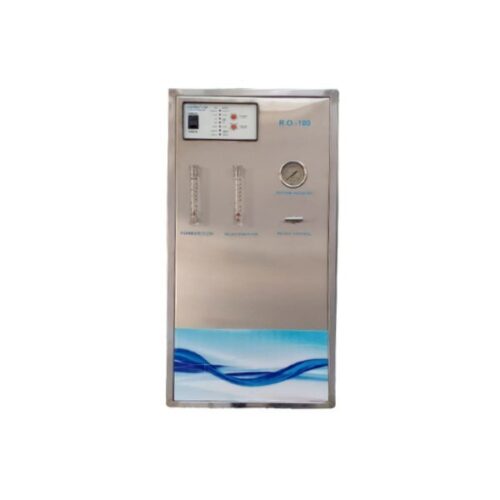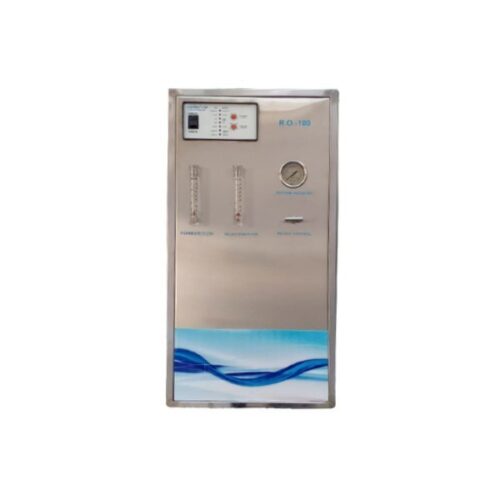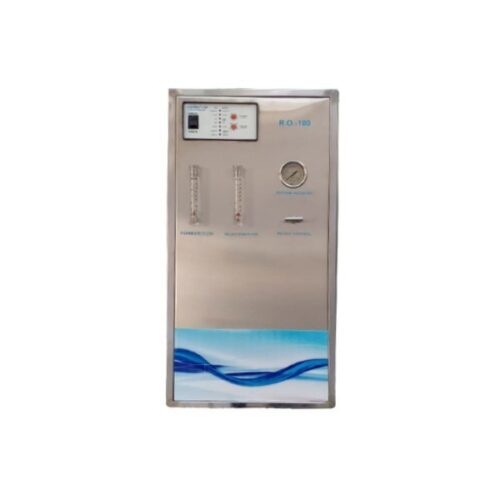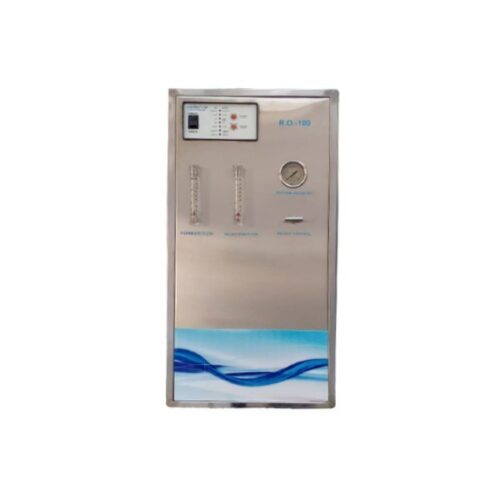Industrial RO plant for Food & Beverage
Reverse Osmosis (RO) systems are indispensable in food and beverage manufacturing, ensuring water purity that meets FDA, Codex Alimentarius, and HACCP standards. From ingredient mixing to final rinse cycles, industrial RO plants remove contaminants that compromise taste, safety, and shelf life while cutting operational costs.

Why RO Systems Are Essential in Food & Beverage Production
Eliminates ≈ 99 % dissolved solids (TDS), chlorine and farm-chem residues that distort taste.
12 % boiler-efficiency gain documented at ABC Dairy after scaling was eliminated.
Ensures compliance with FDA 21 CFR Part 117, ISO 22000 and HACCP CCP limits.
Cuts microbial risk (Legionella, E. coli) in spray bars and rinses.
Key Applications of RO Plants in Food Processing
| Application | RO-Water Role | Industry Examples |
|---|---|---|
| Ingredient Water | Consistent flavour profile | Soft drinks, dairy, breweries |
| CIP Final Rinse | Spot-free, mineral-free surfaces | Meat plants, bottling lines |
| Boiler Feedwater | Prevents scaling in steam systems | Bakeries, canneries |
| Ice Production | Crystal-clear, odour-free ice | Seafood packing, QSR outlets |
4-Stage Beverage RO Train & Typical Removal Rates

Pre-filtration
Multimedia filters (20–50 µm): ≈ 90 % sediment/iron

Carbon Filtration
Adsorbs chlorine/organics: ≈ 95 % chlorine, THMs

Reverse Osmosis
Polyamide membranes: ≥ 99 % ions, pesticides, heavy metals

Remineralisation
Food-grade Ca/Mg dosing: restores 10–50 ppm TDS for mouth-feel
Sustainable Waste-Water Management in the Food Industry
RO Reject Re-use:Chiller or cooling-tower make-up (post-softening) and Floor wash & landscaping (non-edible plants)
ROI Example: Re-using reject in chillers saved ₹ 1.1 lakh / month for a Bengaluru soft-drink plant.
Meets EPA Effluent Guidelines (40 CFR Part 432); supports Zero-Liquid-Discharge (ZLD) when paired with brine evaporators.
Industrial RO Plant Specifications for F&B
| Parameter | Food Processing | Beverage Production |
|---|---|---|
| Flow Rate | 5 000 – 50 000 GPD | 10 000 – 100 000 GPD |
| Recovery Rate | 65 – 75 % | 75 – 85 % (with energy recovery) |
| Material Standards | FDA CFR Title 21 compliant | NSF/ANSI 61 certified |
| Critical Control | Conductivity < 50 µS/cm | TOC < 500 ppb |
Five Key Benefits of RO Plants in F&B Operations
1
Enhanced Product Consistency – Stable water chemistry batch-to-batch.
2
Extended Equipment Life – No scaling in HTST pasteurisers.
2
3
Regulatory Assurance – Validated to SQF Code Ed. 9.
4
Water Savings – 40 – 60 % less make-up vs. conventional filtration.
4
5
Brand Protection – Eliminates water-borne recall triggers.
Selecting Commercial RO Systems for F&B
Sanitary Design: Tri-clamp fittings, electropolished SS 316L.
Automation: PLC + 10-inch HMI touchscreen, remote SCADA.
Certifications: EHEDG & 3-A Sanitary Standards.
Scalability: Modular skids ready for flow-rate expansion.
Our Range of Products
Frequently Asked Questions
Does RO remove viruses from food-processing water?
Yes—polyamide membranes reject > 99.99 % viruses (e.g., norovirus, hepatitis A).
What TDS is ideal for beverage water?
• Bottled water: 10–50 ppm
• Brewing: < 100 ppm
• Soft drinks / CSD: < 10 ppm
Can RO reject water be reused inside a food facility?
Yes—for non-contact uses such as cooling-tower make-up, floor washing or boiler feed (after softening)
How often should F&B RO membranes be replaced?
Every 2–4 years with monthly Clean-in-Place; watch ΔP and rejection trend.
Does RO strip the minerals needed in fortified beverages?
RO removes all minerals; post-treatment remineralisation adds precise Ca/Mg per Codex STAN 108.
How does RO support FSSAI audits?
RO provides validated critical-control-point logs (conductivity, TOC) that demonstrate compliance with FSSAI Schedule 4 water-quality norms, simplifying documentation during inspections








